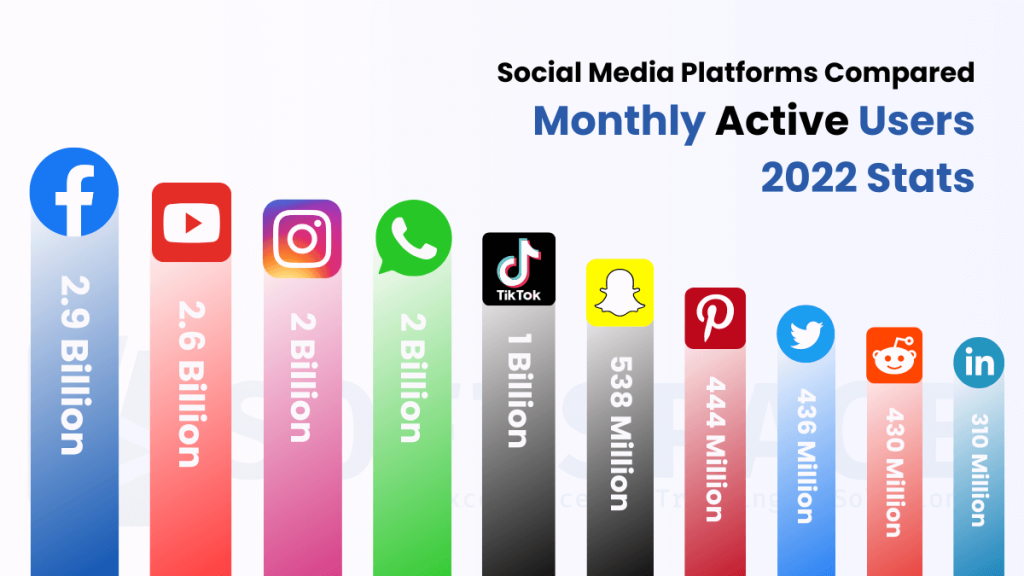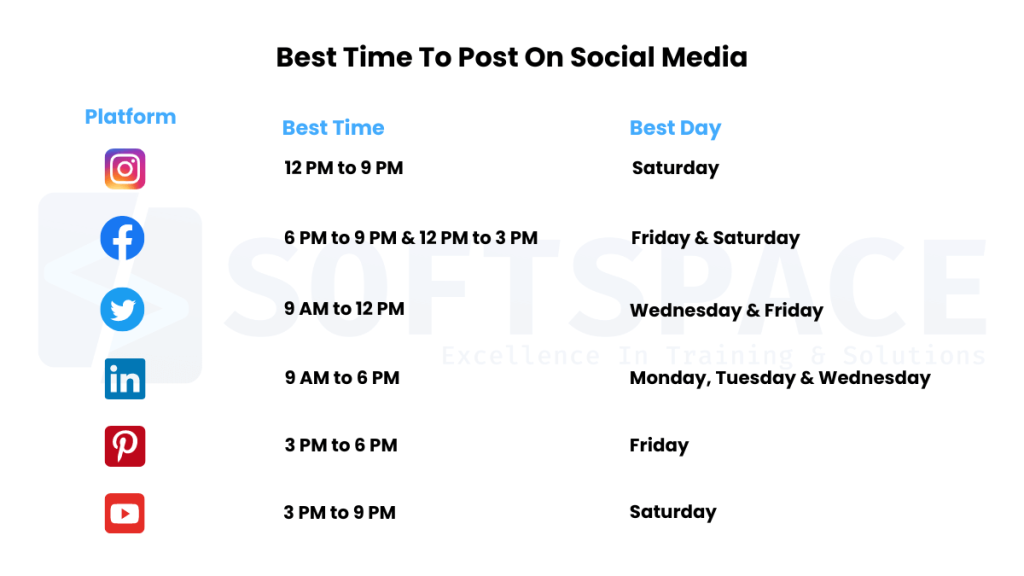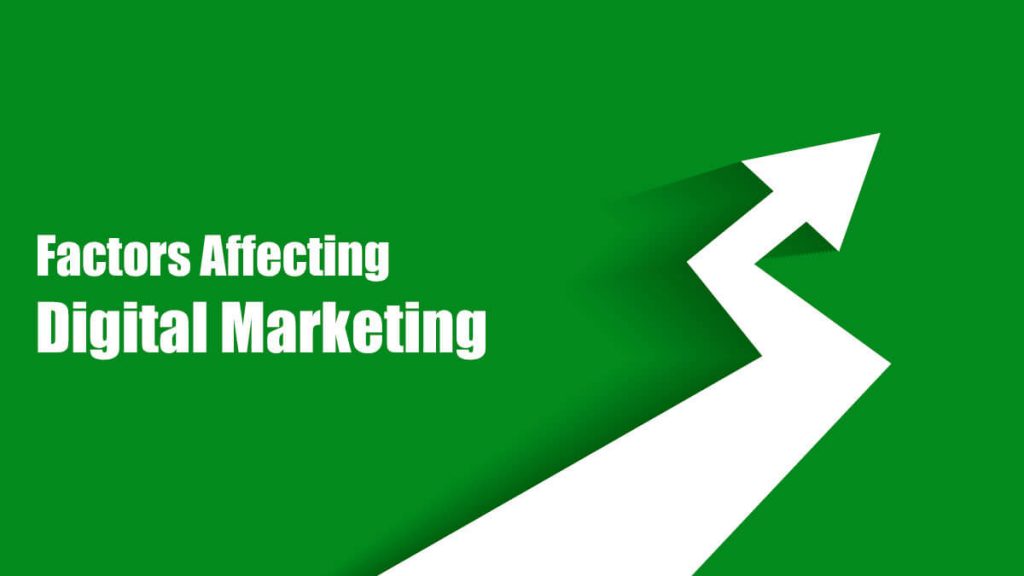Social media has become a vital marketing channel for businesses of all sizes. As a social media marketer, it is exciting to see how many businesses are now looking to grow with social media marketing. However, it is important to have a documented strategy in place to ensure success.
A social media marketing strategy gives a big-picture view of your social media marketing goals and how you can best achieve those outcomes. An effective social media marketing strategy starts with understanding your ideal customer and building a rich context for your target audience.
In this article, we will walk you through the steps to create an effective social media marketing strategy to grow your brand online.
Table of Contents
Importance of having an effective social media marketing strategy
- Social media marketing can increase brand recognition in several ways. Firstly, social media platforms allow businesses to build their visual identity across vast audiences and improve brand awareness.
- Secondly, social media advertising can increase brand awareness by reaching a wider audience.
- Thirdly, social media provides a direct line to the audience, allowing customers to interact with brands in real-time, which can foster deeper connections and increase brand recognition.
- Fourthly, social media marketing can increase trustworthiness and brand recognition by providing a platform for businesses to showcase their expertise and thought leadership.
- Lastly, simply having people interact with a business’s content on social media can increase brand awareness and begin building the business’s reputation.
Define Your Goals
Importance of setting goals
Social media marketing is an essential aspect of modern business, and it is crucial to have a social media marketing strategy to maximize efficiency and increase results.
A social media strategy is a document outlining social media goals, tactics, and metrics to track progress.
Having a social media strategy creates direction and precision, allowing businesses to know whether they are succeeding or failing. It also aligns social media goals with business objectives, ensuring that social media efforts are not wasted.
A social media strategy can help businesses to increase brand recognition, audience engagement, and website traffic. It is important to have solid strategies in place to accomplish specific results that a brand or client is looking for.
Examples of social media marketing goals
Social media marketing is a crucial aspect of modern business, and having a social media marketing strategy is essential to maximize efficiency and increase results.
A social media strategy is a document outlining social media goals, tactics, and metrics to track progress. Setting clear social media marketing goals is an important part of creating a successful social media marketing strategy.
Examples of social media marketing goals include driving traffic to a website, generating leads, increasing engagement, creating brand awareness and loyalty, and building customer engagement.
It is important to set SMART goals that are specific, measurable, achievable, relevant, and time-bound. A social media marketing strategy helps businesses to align their social media goals with their overall business objectives, ensuring that social media efforts are not wasted.
How to set SMART goals?
Having a social media marketing strategy is essential for businesses to maximize efficiency and increase results in their social media marketing efforts.
A social media strategy is a document outlining social media goals, tactics, and metrics to track progress. Aligning social media goals with overall business objectives is crucial to ensure that social media efforts are not wasted1.
Setting clear and specific social media marketing goals is an important part of creating a successful social media marketing strategy. Examples of SMART social media goals include:
- Increasing brand awareness by 20% in the next six months.
- Generating 100 new leads in the next quarter.
- Increasing engagement by 15% in the next month.
It is important to track progress towards these goals and adjust strategies as needed to achieve them. Having solid strategies in place can help businesses to accomplish specific results that align with their overall business goals.
Importance of understanding your target audience
Understanding your audience is crucial for effective communication and marketing. It involves identifying the audience and adapting the message to their interests, level of understanding, attitudes, and beliefs.
By understanding your audience, you can provide a solution to their problem and meet their needs. This can help you create more personalized content and connect with them on a deeper level.
Audience analysis can also improve your writing and increase your effectiveness as a speaker. In social media marketing, knowing your audience is critical to developing any marketing strategy.
It allows you to segment your market, target your marketing, and create real connections. You can gain insight into your audience’s preferences and behaviours through research, analytics, and demographics. This is the most crucial fact in creating and delivering an effective social media marketing strategy.
How to identify your target audience?
Identifying your target audience on social media is crucial for effective social media marketing. A social media target audience is a group of people that you want to reach using your various social media channels based on demographics such as age, job title, income level, education, location, or behaviour.
To find your target audience on social media, you can start by brainstorming about your target demographics and creating buyer personas. You can also monitor who follows you on social media, interacts with your posts, and look for common characteristics such as age, location, language, and interests.
Additionally, you can use social media analytics to understand your audience’s preferences, behaviours, and interests. Once you have a clear idea of who your audience is, you can run more relevant campaigns with better returns and spend your advertising budget more effectively.
Overall, identifying your target audience on social media requires a combination of research, data analysis, and audience adaptation techniques to create more personalized content that resonates with them.
How to create a buyer persona?
Creating a buyer persona is an essential step in identifying your target audience. A buyer persona is a fictional representation of your ideal customer based on research and data. A buyer is a key component around which you have to build your complete social media marketing strategy.
To create a buyer persona, you can start by interviewing your current customers and gathering more general data on your audience. You can supplement your customer research with online surveys, social media analytics, and website analytics to gain insights into your audience’s preferences, behaviours, and interests.
Once you have collected enough data, you can summarize your findings into a detailed profile that includes demographics, psychographics, goals, challenges, and pain points. You can also give your buyer persona a name and a face to make it more relatable and memorable.
Creating a buyer persona requires a combination of research, data analysis, and creativity to create a detailed profile that represents your ideal customer and helps you create more personalized content that resonates with them.
Questions to ask while creating a buyer persona
- Who is your typical customer?
- What is their age?
- What is their location? [If you are a local business]
- Are they male or female? [If accountable]
- What is their education level?
- What are they interested in?
Choose the Right Platforms
Choosing the right social media platforms is crucial for effective social media marketing. It is important to choose the right social media platforms because each platform serves a different purpose and has its particular set of users with their own quirks as to how they interact with content.
Social media platforms are a prime factor to consider while building a pinpoint social media marketing strategy.
By choosing the right social media platform for your brand and tailoring your key messages for each, you’ll better be able to reach your target audience.
Defining your goals on social media and identifying your target audience are the first steps in choosing the right social media platforms. You should also know the different social media platforms and their uses, strengths, and weaknesses.
Analyzing your competitors and seeing which social media platforms they are using and how they are using them can also help you make informed decisions.
Choosing the right social media platforms allows you to make your social media activity as effective as possible and create a truly effective marketing strategy.
The logic is simple. We all know that Facebook is the most widely used social media platform. But, is your audience active on Facebook? If not, it is simply a waste of money advertising on Facebook. If your audience is more active on Instagram or Snapchat, you need to focus there.
Popular social media platforms

How to choose the right platforms for your business?
Choosing the right social media platform for your business is critical to ensuring maximum engagement with your audience. The best platform for your business will depend on your business goals, target audience, and the type of content you plan to produce.
Facebook, Instagram, and Twitter are some of the most popular social media platforms for businesses. Facebook is ideal for building a community and promoting events, Instagram is great for photo and video content, and Twitter is perfect for real-time conversations.
LinkedIn is perfect for businesses targeting professionals or the B2B market, while Pinterest is ideal for businesses with a visual product or service.
To choose the right platform for your business, you should consider the demographics of the platform users, the level of engagement on the platform, and the type of content that resonates with the audience.
By understanding your target audience and their social media habits, you can create an effective social media strategy that will help you build a strong presence on the platforms that are most relevant to your business.
Importance of creating engaging content
Creating engaging content is crucial for successfully grabbing and retaining the attention of your target audience. Interactive social media posts can take many forms, such as well-written articles, captivating videos, entertaining social media posts, or educational blog posts, among others.
By creating engaging content that resonates with your audience, you can boost engagement rates, increase brand recognition, and drive more traffic to your website or social media pages which effectively generates positive results for your social media marketing strategy.
Engaging content is a powerful tool in the current digital age where users have numerous options and distractions at their fingertips. As such, creating content that is both informative and entertaining can be the key to building a loyal following and increasing brand credibility.
Whether you’re looking to create social media posts that increase reach or write articles that convert readers into paying customers, engaging content can help you achieve your goals.
To create engaging content, it is crucial to know your audience and write or produce content that resonates deeply with them. This can be achieved by using emotions such as happiness, shock or awe, laughter, inspiration, or curiosity, among others, to evoke interest in your content.
You can also add value through education, facts, and research, among others, to keep your audience interested and engaged.
What type of content to create for social media?
1. Image/Carousel Posts: Create captivating and aesthetically pleasing posts for each platform to maximize engagement and reach your target audience. Make sure to follow the guidelines and character limits on each platform.
2. Blogs/Articles: Write informative and engaging pieces that provide value to your readers. Use visuals, subheadings, and short paragraphs to make it easy to read and shareable.
3. Ads: Create eye-catching ads that effectively communicate your message and drive conversions. Make sure to use graphics that align with your brand and follow the platform’s ad guidelines.
4. Videos: Create short, attention-grabbing videos that showcase your products, services, or brand with the assistance of an easy-to-use online video editor. Consider utilizing this convenient tool to make product demos, behind-the-scenes footage, or educational content that effectively engages your audience.
5. Infographics: Visualize complex data and information into a simple and memorable graphic that can be easily shared on social media.
6. Live streams: Host live streams to engage with your followers, answer their questions, and share exclusive content. Consider doing Q&A sessions, tutorials, or sneak peeks.
7. Stories: Use Instagram, Facebook, and Snapchat stories to showcase your daily life, share behind-the-scenes footage, and drive engagement. Use stickers, polls, and questions to make your stories interactive and engaging.
Remember, regardless of the type of content, always focus on providing value to your audience and aligning the content with your brand identity.
Tips for creating engaging content for social media
1. Know your audience: Understand who your target audience is, what their interests are, and what they are looking for. This will help you create content that resonates with them.
2. Start with a hook: Create a catchy headline, opening sentence, or image that grabs the reader’s attention and makes them want to keep reading.
3. Use storytelling: People respond well to stories, so use anecdotes, metaphors, and examples to help illustrate your point and keep your audience engaged.
4. Keep it concise: Don’t overload your content with unnecessary details or jargon. Stick to the point and keep it simple.
5. Make it visually appealing: Use images, videos, and other graphics to break up the text and make your content more visually appealing.
6. Add value: Make sure your content provides value to your audience. This could be in the form of advice, how-to guides, or other useful information.
7. Use humour: A little bit of humour can go a long way in making your content more engaging and memorable.
Importance of having a posting schedule
Simple! you don’t have to keep working every day on it. Plant it, create it, schedule it. Having a well-planned and consistent social media posting schedule is essential for maximizing your reach, increasing engagement, and building brand awareness.
By keeping a posting schedule, you can ensure that your content is timely and relevant and that you are reaching your audience on their preferred platforms at the right time.
Additionally, a posting schedule helps you stay organized and on top of your content marketing efforts, ensuring that you are not missing any important opportunities or events.
So, make sure to create and follow a social media posting schedule to boost your online presence and achieve your marketing goals.
Best time to post on Social Media
According to our 2022 survey, the best times to post on social media – across all industries and platforms – are 6 PM to 9 PM and 12 PM to 3 PM. The best day to post is Friday.

How to create a social media posting schedule?
Creating a posting schedule for social media is very important. It is a crucial task in any and every social media marketing strategy. After you have finalized the posts, carousels, reels, and everything that is to be posted, you need to automate everything.
Get hands-on with tools like Hootsuite, Buffer, Coschedule, and Meta Business Suite to schedule and publish your posts. Do not rely on manual effort for the tasks which can be automated with ZERO or MINIMUM expenses.
- Choosing the best time to post.
- Best as per various platforms.
- Tools to help with scheduling.
- Monitor and Analyze Your Results.
To monitor and analyze your social media results, you need to start by identifying your key performance indicators (KPIs). These KPIs should be specific, measurable, attainable, relevant, and time-bound. Some common KPIs for social media include engagement rate, reach, follower growth rate, and click-through rate.
Once you’ve identified your KPIs, you can start using social media analytics tools to track and analyze your performance. There are many tools available, both free and paid, that can help you monitor metrics such as likes, comments, shares, and click-throughs.
One important thing to remember when analyzing your social media results is that context is key. It’s important to understand what’s going on in your industry, your audience, and your competition to accurately interpret your data.
Another important step is to regularly review your metrics and adjust your social media strategy accordingly. Use your analytics to identify what’s working and what’s not, and make changes as needed.
Monitoring and analyzing your social media results is crucial to understanding the effectiveness of your social media marketing strategy. By identifying KPIs, tracking metrics, and adjusting your strategy as needed, you can improve your performance and achieve greater success on social media.
Social Media Metrics to Track
Social media metrics are an important aspect to track as they provide insights into your social media performance. The following are some of the key social media metrics to track:
1. Engagement Rate – This metric helps you measure the level of engagement your content is generating, and the interaction your followers are having with your content.
2. Follower Growth Rate – This metric helps you track the rate at which your follower count is increasing, which can help you identify any opportunities for growth, content trends, or issues that need to be addressed.
3. Impressions – This metric counts the number of times that your content has been seen by users, which can help you understand how well your content is performing.
4. Reach – This metric measures the total number of unique users who have seen your content, allowing you to see how far your content has travelled across social media platforms.
5. Click-Through Rate (CTR) – This metric measures the number of clicks on your content, and can help you determine how effective your calls to action are.
Tracking these metrics can help you get a better understanding of how successful your social media strategy is, and can provide insights into areas where you need to focus your efforts to achieve greater success.
Tools to help with tracking and analyzing results
Tracking and analyzing your efforts is necessary to measure your growth on social media. If your social media marketing strategy doesn’t analyze these results, you are wasting your time. To make it easier there are tools available to measure these results.
Here are some of the top tools that can help you track and analyze your social media results:
1. Hootsuite Insights: This tool provides you with detailed analytics, including follower growth and engagement rates, sentiment analysis, and top-performing posts. You can customize the dashboard to monitor the metrics that matter most to you.
2. Google Analytics: In addition to tracking website traffic, Google Analytics also lets you measure how much traffic is coming from social media sites, which content is driving the most engagement, and which social networks are bringing in the most traffic.
3. Sprout Social: This tool offers advanced social media analytics, including performance reports, competitor benchmarking, and social listening. You can also track your team’s response times and engagement rates to ensure you’re staying on top of your social media game.
4. Buffer Analytics: This tool allows you to track your social media performance, measure engagement rates, and get insights into which content is resonating with your audience. You can also track your top-performing social media posts and schedule content for optimal engagement.
5. Keyhole: This tool helps you track hashtags, keywords, and mentions across social media sites, including Twitter, Instagram, and Facebook. You can also view sentiment analysis, top influencers, and real-time analytics.
By using one or more of these tools, you’ll be able to gain valuable insights into your social media performance and make data-driven decisions about your content and strategy.
Benefits of having a social media marketing strategy
Having a social media marketing strategy can provide numerous benefits for businesses.
- It creates direction and helps businesses to know what they want to achieve with their social media marketing efforts.
- It allows businesses to measure, report, and improve their social media marketing efforts.
- It increases efficiency by streamlining social media marketing efforts and ensuring they align with business goals.
- It can increase levels of customer service and satisfaction by providing a direct line to the audience.
- It can increase brand recognition, audience engagement, and website traffic.
Conclusion
An effective social media marketing strategy is crucial for any business to succeed in today’s digital world. From increasing brand awareness to engaging with customers, social media can have a significant impact on a company’s growth and success.
One of the main benefits of having a social media marketing strategy is the ability to connect with your target audience. By using social media platforms that your audience frequents, you can reach a larger audience and generate more leads.
Additionally, social media allows for two-way communication, giving businesses the opportunity to engage with customers and provide a more personalized experience.
In order to make the most of social media marketing, businesses must also stay up to date with the latest trends and algorithms of different social media platforms.
By understanding each platform’s unique features and guidelines, businesses can create content that is optimized for each channel and achieve the highest possible engagement rates
Overall, an effective social media marketing strategy is essential for businesses to reach and engage with their target audience, build brand awareness, and ultimately, drive growth and success.

13+ Yrs Experienced Career Counsellor & Skill Development Trainer | Educator | Digital & Content Strategist. Helping freshers and graduates make sound career choices through practical consultation. Guest faculty and Digital Marketing trainer working on building a skill development brand in Softspace Solutions. A passionate writer in core technical topics related to career growth.




